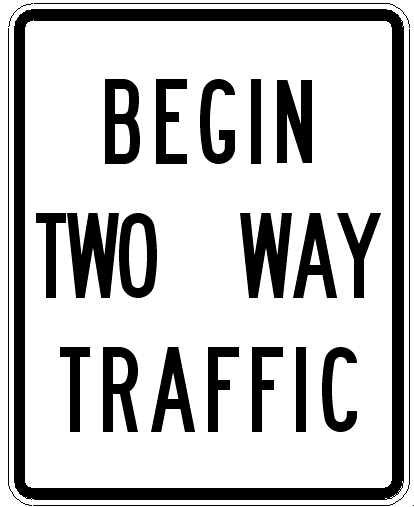Strategies for helping reluctant clients find better ways to express themselves.

Yes, this is a dung beetle pushing a large ball of dung. At least I didn’t use an image of Sisyphus.
Yesterday I wrote about how to approach the problem of a client with a brand identity you don’t like, and making sure you’re not mistaking ‘personal opinion’ for ‘professional advice’.
But what happens when you’ve asked yourself the right questions, remembered you’re not the target, and still come to the conclusion that the client’s brand identity is getting in the way of overall marketing success?
Negative know-it-alls never prosper
You know who I’m talking about: The people who waltz in and proceed to tell the client, with a boatload of condescension, that everything they’ve done up to this point is a giant heap of awful and they need to rebuild everything from the bottom up if they are to have a hope in hell of getting any more business from anyone, ever.
These blowhards do manage to get the odd client, but it’s amazing how they never seem to keep them for very long. Because anyone who tells you they have the magic marketing answer to everything never does – sooner or later clients realize this for themselves, and go elsewhere.
When you first meet a client, you don’t know how much money they’ve already spent on their brand identity; you don’t know how emotionally invested they are in it; you don’t know how the organization feels about it; and you definitely don’t know if what they’re doing is working for them or not. Walking up to someone at a bar and saying, “You know, you’re really kind of ugly, but if you fix your hair, makeup and wardrobe, maybe we could go out sometime…” is the start of a totally dysfunctional relationship.
Ask questions, build trust
Client relationships are like any other relationships: Before they’re going to take your advice, they’re going to have to trust you. So before you make pronouncements about their brand and their organization, start by asking questions. These are the questions I ask when I think a client may need a brand identity overhaul:
1. Tell me the story behind your brand.
As I said yesterday, a logo or brand identity that looks unappealing to you may in fact have a great story behind it. You may even find that that story has value for their sales team, or quite a bit of equity in the marketplace. (‘Kleenex’, for example, is actually a terrible name, and the logo isn’t much better. But it doesn’t matter, since ‘Kleenex‘ has been around so long, and is so ubiquitous, that it’s become the generic name for any paper-based facial tissue.)
How this can help your case: If they struggle to tell you the story behind their brand, you can suggest that building a brand identity with a proper story behind it will make their sales and marketing efforts a lot easier.
2. Tell me the history of your brand identity. Have you worked with designers or marketing people before?
This is important to know, because if they say they just spent $50,000 on a new brand identity – especially if they worked with one of the blowhards mentioned above – they’re going to be highly sensitive to criticism or suggestions for change. On the other hand, you may discover that the current logo was designed by the CEO’s 18-year-old nephew.
How this can help your case: If you discover that they’re new to ‘marketing’, educating them about how a properly-articulated brand identity can help them position and sell themselves can be all you need to propel them in the right direction.
3. Tell me about how you think marketing can help your business.
Good marketing starts with understanding the client’s business, so by the time you’re talking about branding you should already know what they do and why they think they’re unique in the marketplace. Now it’s time to drill down to identify gaps or opportunities that marketing can help to fill. Ideally this will become a discussion between you and the client – with you recommending opportunities, not just taking orders from the client – but it’s good to start with what the client is thinking about how you can help them.
How this can help your case: If the client identifies a specific challenge (“Our salespeople aren’t getting enough meetings” or “People aren’t spending enough time on our website”), they open the door to a conversation about how the brand identity might be part of the problem.
4. Who is your target audience/market?
Over the years, I’ve worked with several property management-related companies, many of whom have had dreadful brand identities. At first I tried hard to get them to change, until I realized that 95% of their business happened as a result of long-standing relationships within a fairly tight-knit community of guys (yes, it’s usually men) who have known each other forever, have owned commercial/industrial properties together, and tended to make business deals based on handshakes and beer. They didn’t need expensive brand identities with charming brand stories – they just needed some basics to make them look professional.
However, when some of these businesses grew, and were looking to penetrate larger consumer markets, then it was time to push a better brand identity.
How this can help your case: Knowing your client’s target market will allow you to demonstrate who else is excelling in their space – and show them how important it is that their brand identity is good enough to compete.
5. How do you see your business growing in the next 12-24 months?
As a business grows, so does their need for marketing materials. Today, all they think they need are business cards and a website; 6 months from now they may need anything from billboards to tradeshow displays to RFP templates; 2 years from now they may need branding and materials for line extensions.
How this can help your case: The more you know about your client’s future plans, the more you can help them identify the marketing and communications materials they’ll need down the line – and the easier it is to demonstrate how their current brand identity won’t accommodate that kind of growth in the long run.
It’s an organic process
It’s a rare client who, after being asked a question or two, says, “Okay! I get it – let’s revamp the whole brand identity! How soon can we do it?” That’s okay – I’m a firm believer that the best brands are built over time, and as a result of a close relationship between the organization and their marketing team. Asking the right questions will help you build that relationship.





